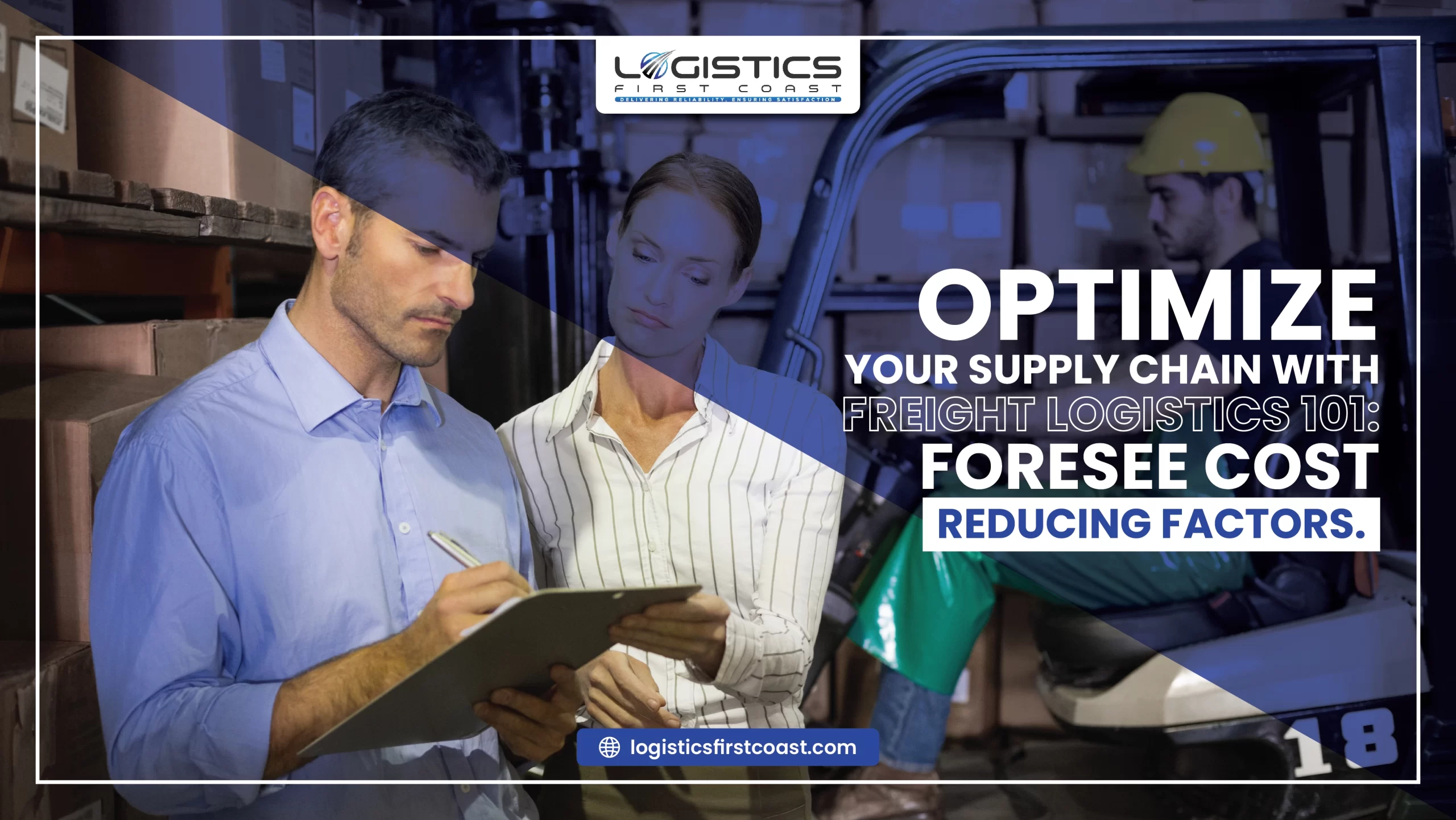Optimize Your Supply Chain with Freight Logistics 101: Foresee Cost Reducing Factors

Did you know that freight logistics is the engine that drives global trade? Having a reliable logistic partner equally shows how critical of a role it serves to a country.
But like every engine is a main part of the car, your logistic partner has to be strong enough to fulfill what it’s tasked to do, and you will go through a ton of complicated red tape to ensure it doesn’t start pinging.
Does all of it sound like a tough nut to crack? Well, it shouldn’t anymore, because in this guide we are going to disclose all the details you will need to master as a beginner or a professional logistic partner.
Understanding Freight Logistics
Freight logistics is the process of planning, coordinating, and carrying out the movements of goods from customs to their final destinations or designated warehouses, a key concept in warehousing 101. It’s all about how shippers meet the customer’s expectations by delivering the required goods on time.
Supply chains are steps needed to move raw materials, products, or services from their initial form to the customer to enhance customer satisfaction. A large company or project always involves multiple supply chains, described as a supply network. Supply chain managers and management are critical to creating customer value and getting the most out of your supply chain network.
Why International Logistics Services are Essential to the Supply Chain?
The global supply chain involves international transportation and that plays a major role in the flow of material and finished products from one country to another. In particular, it enables businesses to easily get their hands on the raw material, organise production and distribution, and deliver finished products at a relatively lower per unit cost.
The Three Components of Logistics
Freight logistics comprises a wide range of services including inbound, outbound, and return logistics. Depending on the nature of the business and the extent of operations a particular business may engage one or several of these logistic services to transport bulky goods to their various destinations. The appropriate inbound and outbound logistics strategies that can enhance a business can create sales and costs, profit margin, and customer satisfaction instantly.
1: Inbound Logistics
Every organization uses inbound logistics to receive materials, resources, and items that its employees will use to create or assemble products for sale to customers.
2: Outbound Logistics
Outbound on the other hand refers to the process of moving products and stocks from the warehouse through transport to the consumer. The key processes in outbound logistics include order fulfillment, packing of freight products, and shipping of packages with the delivery as well as after-sales services resulting from the delivery process.
3: Reverse Logistics
Reverse operates like the traditional flow of freight and inbound and outbound logistics. However, its objectives are directed towards the return of freight and products. Reverse logistics involve flows that take back goods from the customer back to the organization.
Different Shipping Modes in the Freight Logistics
Here’s a detailed description of the most common shipping types to help you understand them and select the best one for your needs:
Truck freight
This cargo trucking system delivers goods using various truck sizes. It certainly gives flexibility and helps in accommodating different sizes of shipments whether the distance is short or long.
Although the cost of transporting goods by trucks is relatively higher than most other modes of transport within the same area, truck freight is slightly quicker than most other forms of transport for the delivery of packages within the same region or larger volumes but significantly slower for long distances. Truck freight is further classified into these two modes:
- Full Truckload: A mode for a cargo that fills an entire container and is mostly ideal for large shipments.
- Less Than Truckload: This mode is best for shipping that are not cost-effective because this freight is more suitable for shippers with smaller shipments. However, the transit time may be lower due to additional pick-ups and delivery stops.
Air Freight
This mode of shipping is the fastest one of them all and is mostly suitable for urgent shipments. While air freight may be more costly, the peace of mind that comes with knowing your valuable goods are secure, intact, and delivered swiftly often outweighs the financial considerations.
Sea Freight
It is arguably the most common shipping mode. Container ships convey plenty of cargo across broad shipping routes worldwide at a relatively low cost, and they are frequently classed between the same two modes:
- Full Container Load: Many shippers choose to use a complete container for one shipment because it offers faster transit times and lower per-unit costs for large volumes.
- Less Than Container Load: It is more suitable for smaller shipments as it requires sharing of container space with other shipments. It is also more cost-effective but might lead to potentially longer transit times.
Rail Freight
Rail transportation is another attractive option for shippers in search of a solution for transporting their goods at rates after truck freight. it can also be a decent alternative to shipping goods in bulk.
Each of these shipping modes has its downside. On the contrary, it’s quite normal to have more than one freight mode in many shipments, as it can sometimes even be more beneficial concerning its costs.
Consolidate Shipments to Save Cost
Another great way to cut down the cost of freight is to easily combine the shipment. A way of consolidating the small shipments is to reduce the number of small packages and instead make a larger freight. The prices for transportation depend on the quantity of the shipment. The larger the freight you send, the lower the price you would be charged per unit. Our freight services 101 offers competitive rates and reliable solutions.
Choosing an Operative Partner
If you have limited resources to improve your transportation and logistics management services, then let us save you time. With Logistics First Coast, you get a smooth distribution of all your cosmetics and beauty products ensuring all your deliveries are effectively managed.
Summary of the View
Freight logistics deals with the shipment of products that are inevitable for global business and commerce. This means it deals with the shipment of products, incoming, outgoing, and returns logistics. There are various shipping modes (truck, air, sea, rail) and each of them costs differently and takes different times to deliver. Combining your loads to save more cost. Selecting the right logistics partner clears half of your burdens.
Recent Project
Taking good care of your skin doesn’t have to be expensive. With just a little daily attention and the right products, you …
Oily skin is one of those things that can be taken as a blessing or as a curse. On one hand, you …
Congratulations, You’ve finally discovered the natural skin care products that have been snapped up in no time every day we have restocked! …
It doesn’t matter what fruits every season has to bring, but as long as your skin is breathing fine and glowing in …




